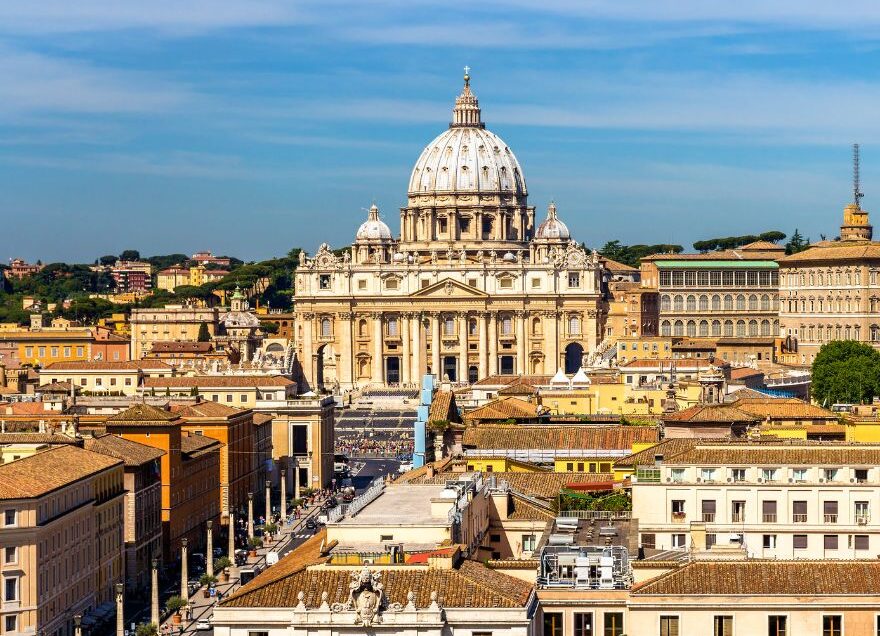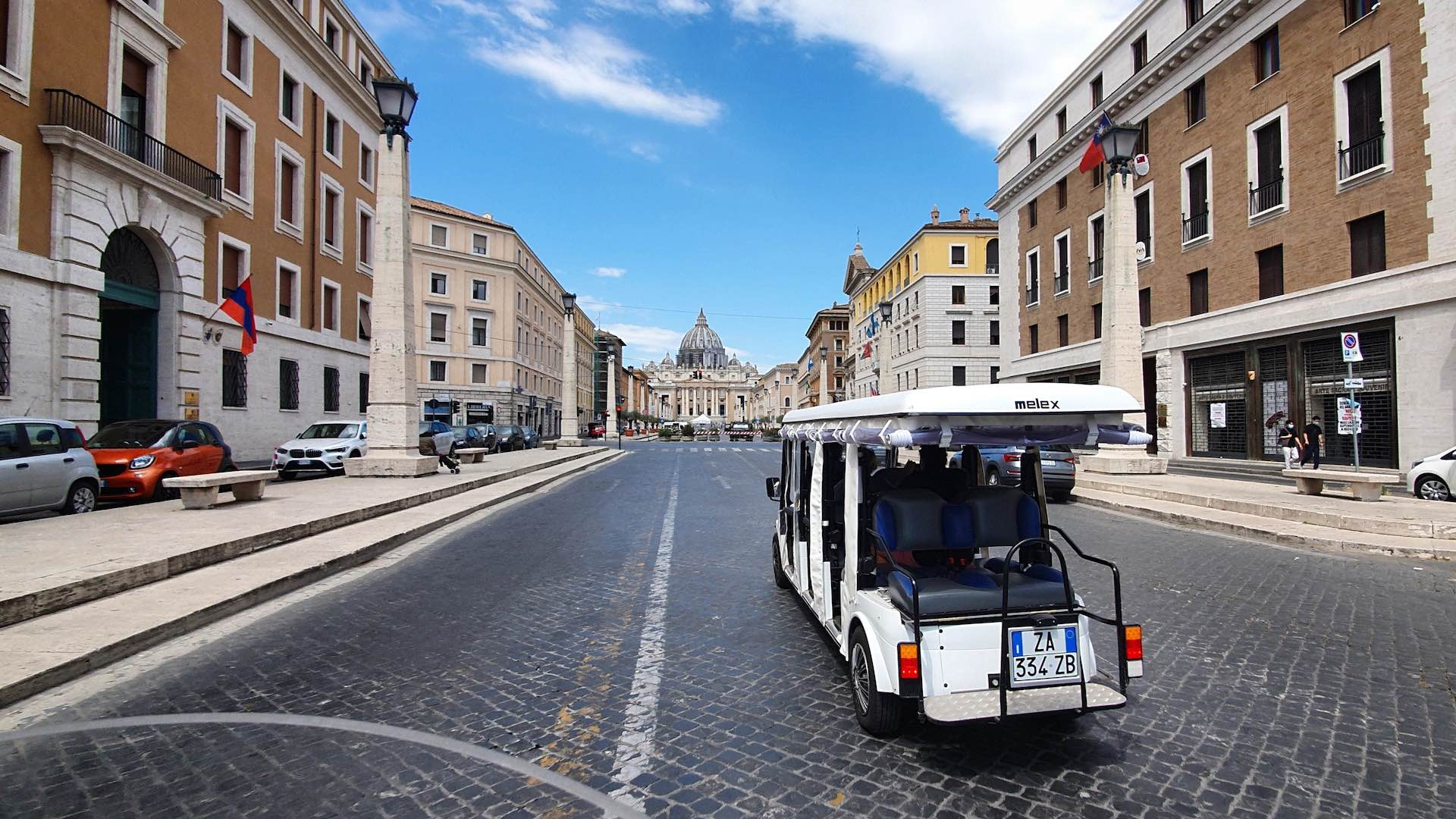A lot of cities are given nicknames.
Some people argue over what the ‘City of Lights’ is, or the ‘City that never sleeps’ or ‘The City of love’.
But it seems to be embedded into a globalized cultural ‘concrete’, that Rome is and will always be the ‘Eternal City’.
And it would be incredibly courageous for anyone to argue against that.
Rome’s name has many historical roots which both theoretically and in practice proves to be most fitting. It is called the Eternal City due to a variety of different reasons, such as enduring architecture and the great religious significance it holds.
This article will go into depth with the origins of the currently most used name, Rome. It will also attempt the histories of the names the beautiful city has gone by, over eras. These will point to a consensus of Rome being ‘eternal’ in quality.
Why is Rome called Rome?
The etymology of the city’s name suggests that Rome is named after the River Tiber that runs through it. The Latin word ‘Rome’ or ‘Rum’ can trace down its associations to mean ‘river’ or ‘stream’.
The tale that follows the name is that of the infamous abandoned twins Romulus and Remus, who were raised by the she-wolf. In the decision of creating a new city, the two brothers conflicted with each other, with Romulus ultimately killing Remus and possibly naming Rome after himself.
There are more theories that exist to explain the roots of the city’s name.
The Etruscan word “ruma” has a root in “rum” that is “teat”. This could either refer to the teats of the she-wolf that nurtured and fed two brothers, or it could refer to the shape of the two nearby hills of Palatine and Aventine.
Did you know that Rome was not always considered to be the capital of Italy?
Previously it used to be Florence, due to its density in Renaissance art and important culture. However, Rome later became the capital under Italian unification, when the sovereign states meshed into one to become the Kingdom of Italy in 1871. The symbolic importance of the Roman Empire being located here also played a vital part in it being chosen as a capital.
What is the Eternal City?
Whether it is called the Città Eterna, Urbs Aeterna, or Imperium Sine Fine, all these titles that have been given to Rome to refer to its ‘eternality’. This label has been continuing on from historical times and into this contemporary era
The Roman ruins and their preservation have a huge role to play in the Eternal City name. It is a marvel how some of the most innovative, pioneering architectural marvels have lasted for us to be able to witness today- it makes it seem that these landmarks will remain evergreen no matter how much the world around them changes.
Rome’s literary culture also plays a part in its unforgettable impact on the world, with the influence of poetry and philosophical writings spanning centuries.
Rome itself has been a central part of world history, such as the rise and fall of empires, the spread of Christianity and of the Renaissance.
If these factors still have an impact today, it speaks of their immortal strength, as if they will always be here.
Who called Rome the Eternal City?
The amount of references made to the city of Rome are insurmountable. It has been talked about fondly, or with an air of bewilderment by poets, writers, painters, actors and filmmakers.
- The Roman poet Virgil in his poem called ‘Aeneid'(29-19 BC) calls Rome the Eternal City in order to pour on about its never -ending nature.
- In his poem “Adonais” (1821) the English poet Percy Bysshe Shelley refers to Rome as eternal due to a quality of timeless beauty that it holds.
- American novelist Nathanial Hawthorne wrote in his book “The Marble Faun” (1860) about Roe’s eternality due to its historical and artistic richness. He also said, “How is it possible to say an unkind or irrevential word of Rome? The city of all time, and of all the World?”
- Italian poet Gabriele D’Annunzio in works like “Roma Redenta” (1909) calls it the Eternal City and delves into its historical and cultural significance.
These are just a few examples of the many references that have been made over time about Rome as an Eternal City.
What is Rome’s nickname?
There are so many names that have been used to refer to Rome, alternative to the Eternal City, for centuries. Some of these nicknames include:
- Caput Mundi: This Latin phrase translates into ‘Capital of the World’. Roman poet Marco Anneo Lucano has been known to use it amongst others, due to Rome being known for its political and military power and world-known religious significance due to the Vatican City being contained within its premises.
- Urbs Sacra: From Latin this translates to ‘Sacred City’.Roman Emperor Septimius Severus used this term, but it is interesting to note that his reference to a sacredness had to do with Roman religion that preceded Christianity.
- City of God: St Augustine wrote “City of God” in the early 5th century defending Chrisianity from the belief held that the fall of Rome came from the abandonment of traditional Roman gods. He argues that the ‘perfect’ city would be the city of god.
- City of the Seven hills: Rome gets this name because of the hills Aventine, Caelian, Capitoline, Esquiline, Palatine, Quirinal, and Vimina that make up the geography of the city.
- The city of echoes, the city of illusions, the city of yearning: Giotto di Bondone, an Italian painter and architect used these phrases to describe Rome, considering the optical illusions that are created by buildings and historical landmarks when seen from different vantage points.
How to visit the Eternal City?
Is the eternal quality of Rome luring you in? Do you want to dive deep into the different aspects of the city that have made it into the hall of fame for their timelessness?
Walks Inside Rome has cast a wide net to provide an array of tours that cover architectural sites, layered histories, Roman and Italian gastronomy, parks and villas of the city, shopping, day trips and much more. Signing up for a tour is the optimal way to discover the city.
For information about tours available, you can send us an email at [email protected].







